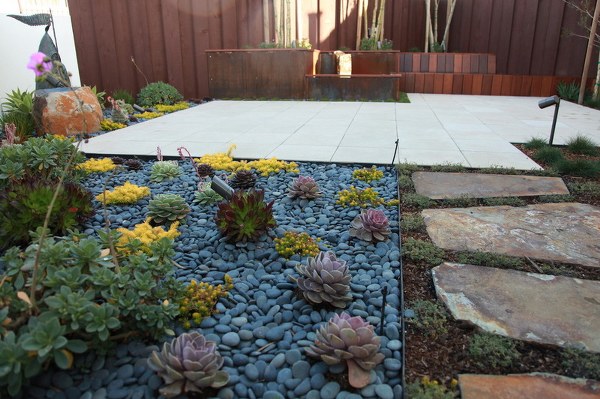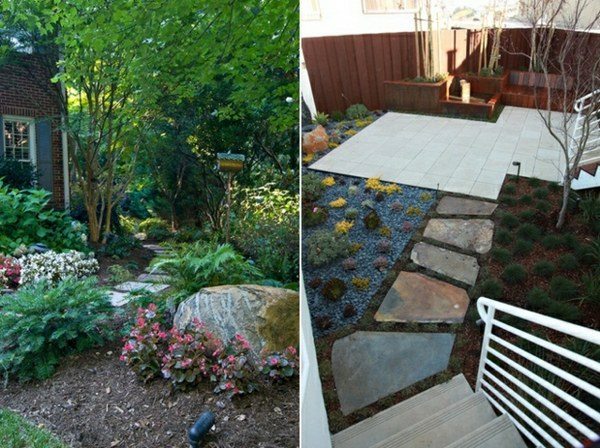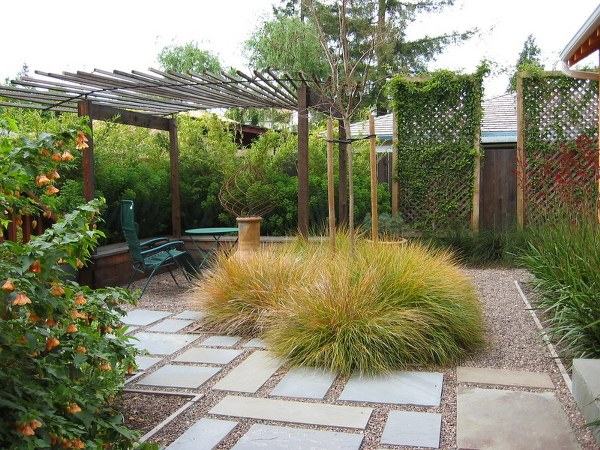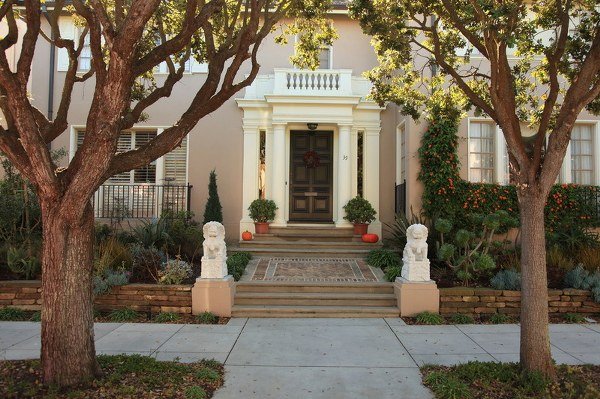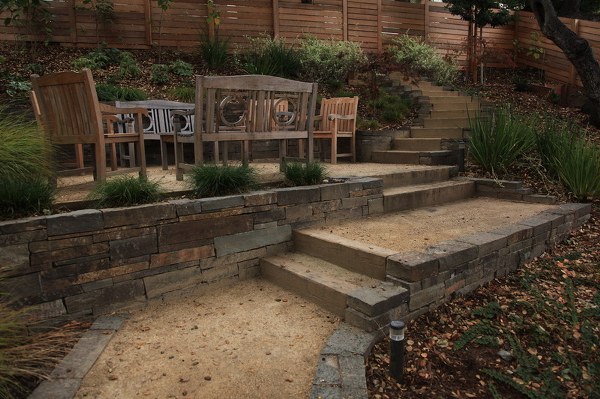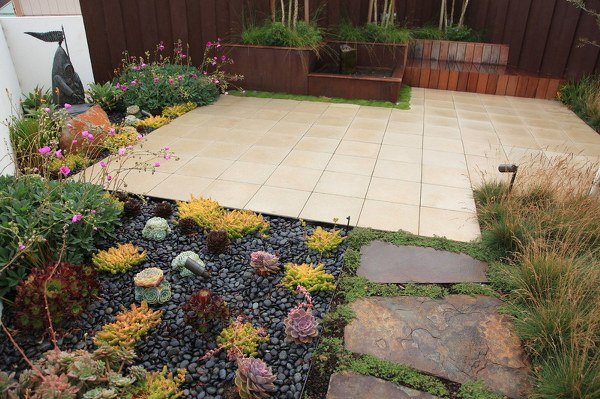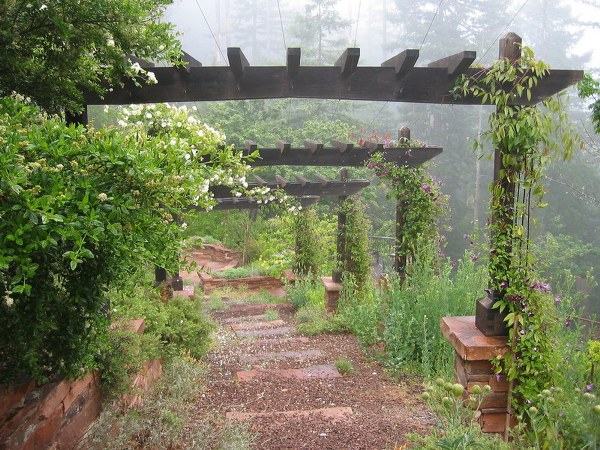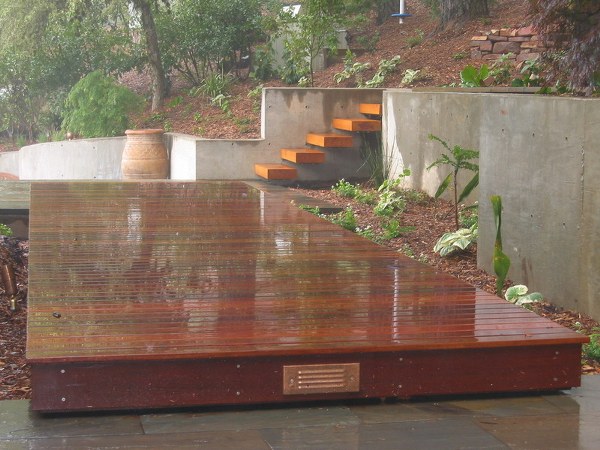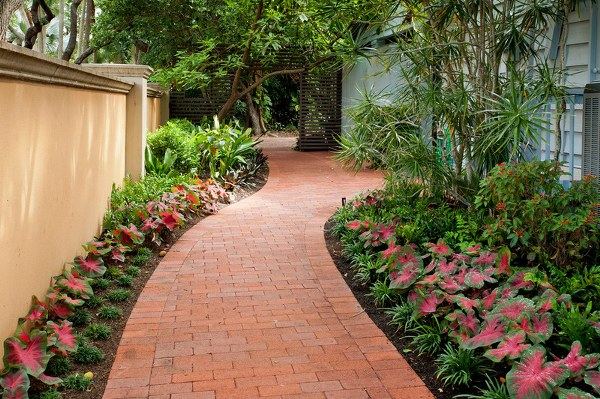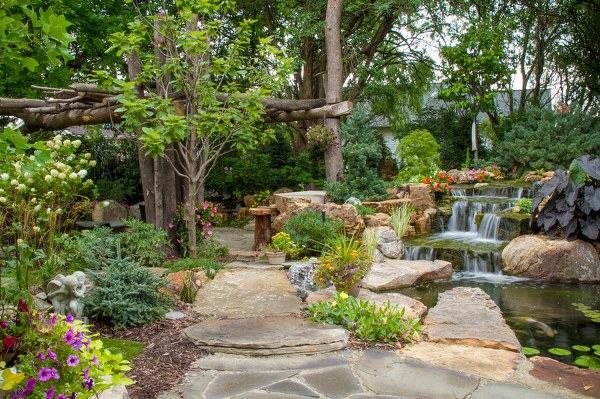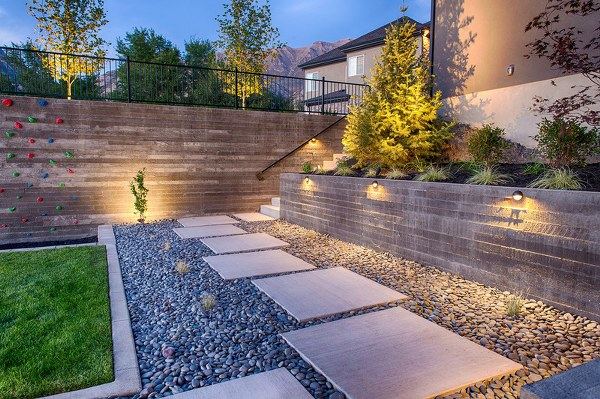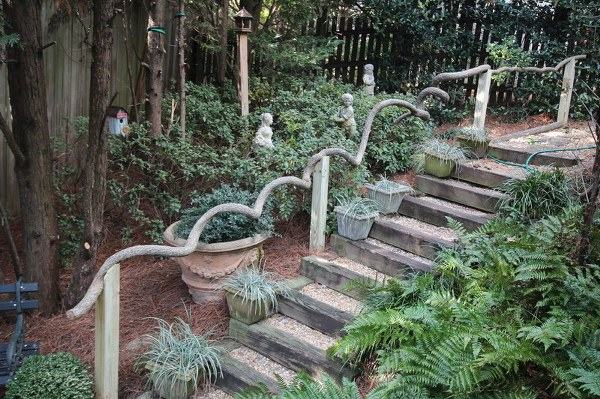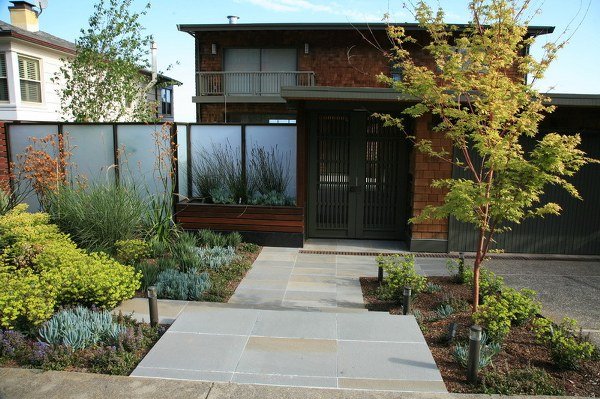You want to create a garden path, but can not decide about the material? We shall try to overview of the basic principles and possibilities for a harmonious garden path design. The three main principles that you must follow are – it should be stable, in compliance with the style of the exterior design and naturally, built according to the purpose.
Before you create the garden path design, you should do some careful planning. The walkway should be designed in such a way so that slipping is prevented while walking in the rain or snow. It is also very important how often and how many people will use it. If you need a path, which will circle around your flower beds and facilitates working in the garden, it could be about 1 meter wide. But planning a walkway that leads to the gazebo, for example, you should provide a minimum width of 1.5 meters.
Gravel has several advantages – it is a low-cost option and is easy to lay. You do not need great knowledge and also drainage is not necessary as the water runs off easily. Disadvantages – gravel surfaces are difficult to keep clean. Therefore, it is recommended use gravel only at sunny sites. Otherwise moss could grow. Garden path using paving stones has some benefits. The paving stones are slip resistant and appear natural. With a good quality and a stable base, your walkway may last for several decades. Disadvantages – The paving stones are made of concrete or natural stone. The huge choice of stone types might confuse, and you should already know the differences between the different types of stone. Here it is in any case recommended that one opts for the already expensive alternative – these stones are frost resistant. A path made of wood is a cheap alternative that looks natural. The drawback is especially the slippery surface of the timber.

